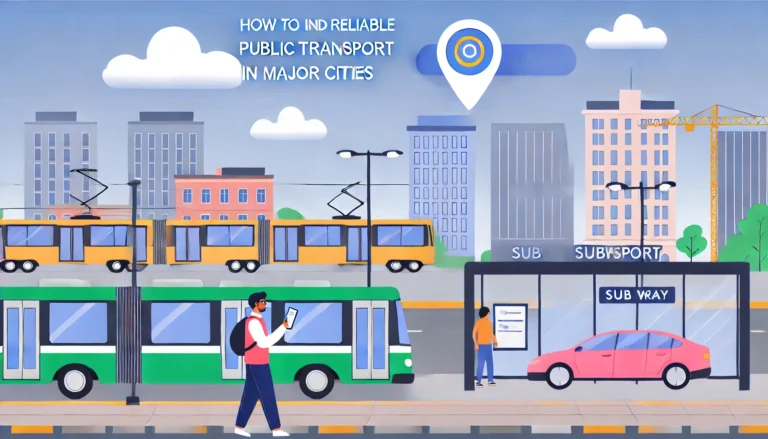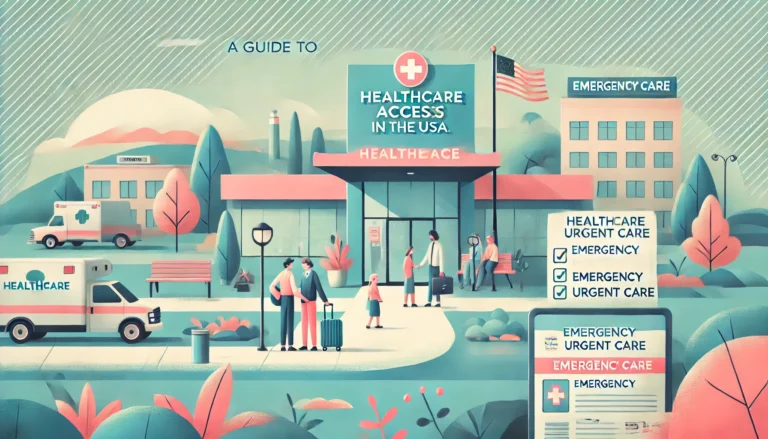The Ultimate Guide to Traveling on a Budget in the USA
Introduction
Traveling across the United States doesn’t have to break the bank. With some strategic planning and cost-saving tricks, you can explore iconic landmarks, scenic national parks, and bustling cities on a budget. Here’s the ultimate guide to traveling the USA without draining your wallet.
The Ultimate Guide to Traveling on a Budget in the USA
1. Plan Your Trip During Off-Peak Seasons
- Avoid Peak Times: Summer and major holidays (Thanksgiving, Christmas) are peak travel times when flights, accommodations, and activities are most expensive.
- Best Off-Peak Seasons: Spring (April-May) and fall (September-October) offer milder weather, fewer tourists, and lower prices in most parts of the U.S.
Tip: Book flights and accommodations months in advance to lock in off-peak prices.
2. Look for Budget-Friendly Transportation Options
- Budget Airlines: Consider airlines like Southwest, Spirit, and Frontier, which often have competitive fares. Use comparison sites like Skyscanner or Google Flights to find the best deals.
- Public Transit: Public transportation (buses, metros) in cities like New York, Chicago, and San Francisco is affordable and convenient.
- Rideshares and Car Rentals: For road trips, compare rates on platforms like Kayak and Rentalcars.com for affordable rental options. Apps like Turo, which lets you rent vehicles from locals, often offer better rates.
Tip: Look for discount travel passes in larger cities, like the MetroCard in NYC or the Go City Pass, for savings on transit and attractions.
3. Book Affordable Accommodations
- Hostels and Budget Hotels: Sites like Hostelworld and Booking.com list affordable hostels and budget-friendly hotels, many with private rooms.
- Airbnb and Vacation Rentals: Renting a room or shared space on Airbnb can be cheaper than hotels, especially for extended stays.
- Camping: If you’re traveling near national parks or rural areas, camping is a cost-effective option. Look for affordable sites on Recreation.gov or reserve spots in state parks.
Tip: Some Airbnb rentals offer discounts for weekly or monthly stays, so consider a longer stay for better rates.
4. Save on Food and Dining
- Grocery Shopping: Buy food from local grocery stores and prepare meals when possible, especially if your accommodation has a kitchen. Stores like Walmart, Trader Joe’s, and Aldi offer budget-friendly options.
- Eat Like a Local: Look for local diners, food trucks, and affordable eateries instead of touristy restaurants. Apps like Yelp and Google Maps help you find highly-rated budget options.
- Lunch Specials and Happy Hours: Many restaurants offer lunch specials that are cheaper than dinner options. Happy hour deals can provide discounted food and drinks.
Tip: Bring a reusable water bottle to refill along the way, as bottled water can add up quickly.
5. Take Advantage of Free Attractions
- National Landmarks and Parks: Many landmarks, such as the National Mall in Washington, D.C., and Central Park in NYC, are free to visit. National parks also have several free entry days each year.
- Free Museum Days: Many museums offer free entry on specific days or times. Research the museums in each city to find out when you can visit without a fee.
- Public Festivals and Events: Cities across the U.S. host free public events and festivals, especially in summer. Check local event listings for free concerts, movie nights, and community events.
Tip: Search “free things to do in [city name]” before visiting each destination to find updated listings.
6. Use Travel Rewards and Loyalty Programs
- Airline Miles and Points: Sign up for frequent flyer programs and start earning miles with every flight. Credit card points can also be redeemed for flights and hotels.
- Hotel Loyalty Programs: Major hotel chains like Hilton, Marriott, and IHG offer loyalty programs with free nights and upgrades after accumulating points.
- Discount Cards: Consider travel discount cards like AAA or Student Advantage for discounts on accommodations, attractions, and car rentals.
Tip: Credit cards with travel rewards often have sign-up bonuses that can give you a major boost in points toward flights or hotel stays.
7. Travel with Friends or Family
- Split Costs: Traveling with others allows you to split the costs of accommodations, car rentals, and gas, making the trip more affordable for everyone.
- Group Discounts: Some attractions offer group discounts. Check ahead of time to see if you qualify.
- Share Gear and Supplies: If you’re camping or road-tripping, sharing gear like tents, coolers, and cookware can reduce expenses.
Tip: Larger Airbnb rentals can often accommodate groups for less than the cost of booking multiple hotel rooms.
8. Opt for Road Trips to Explore More Affordably
- Flexibility in Sightseeing: A road trip allows you to visit multiple destinations at your own pace without the cost of multiple flights.
- Stay in Budget-Friendly Areas: Instead of expensive cities, stay in smaller towns or campgrounds near major attractions.
- Fuel and Food Savings: Split fuel and food costs with fellow travelers and buy food in bulk.
Tip: Use apps like GasBuddy to find the cheapest fuel stations along your route.
9. Utilize Budget Travel Apps and Websites
- Hopper and Skyscanner: These apps help track flight prices and notify you when the best deals become available.
- HotelTonight: This app offers last-minute hotel deals, often at deep discounts.
- Couchsurfing: Couchsurfing allows you to stay with locals for free, which can also offer cultural insight and tips from a local perspective.
Tip: Many travel apps offer exclusive discounts for first-time users—take advantage of these when signing up.
10. Plan and Budget for Entry Fees
- National Park Pass: If visiting multiple national parks, consider an America the Beautiful pass for $80. It grants you entry to all U.S. national parks for a year.
- City Passes: Many major cities have bundled attraction passes, like the New York CityPASS, that offer discounts on multiple tourist sites.
- Budget for Big Attractions: Prioritize the must-see attractions and allocate a specific budget for them to avoid overspending.
Tip: For city passes, check what’s included and make sure the attractions align with your interests.
Conclusion
Traveling on a budget in the U.S. requires a bit of planning and flexibility but is entirely doable. By following these tips—like traveling during off-peak times, taking advantage of free activities, and using travel rewards—you can have an amazing and memorable trip without overspending. Focus on enjoying unique, low-cost experiences, and remember that some of the best travel memories are made in the most unexpected places.





